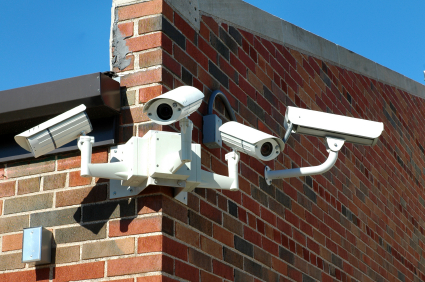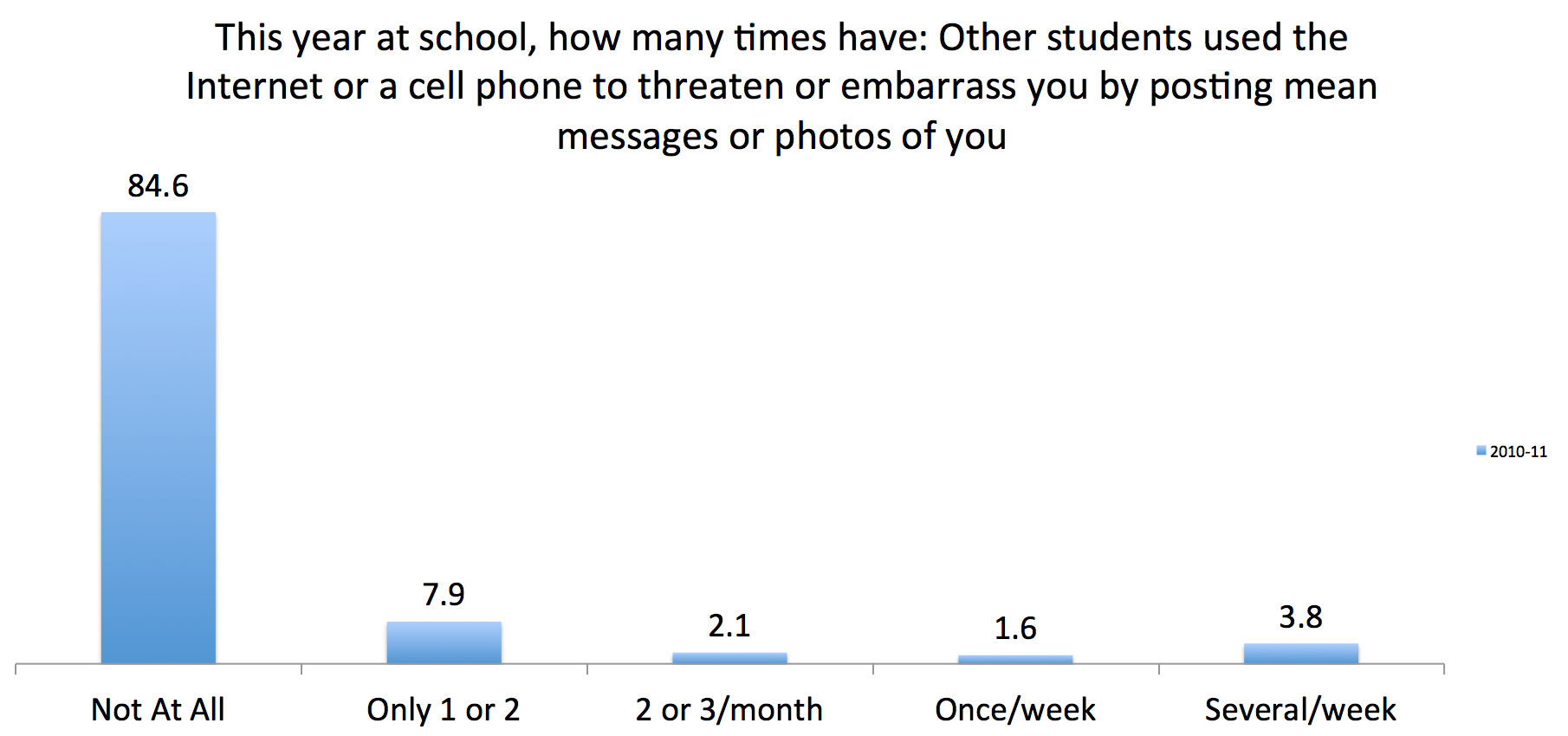Sign up for our information-filled email newsletter

Mental Health and School Shootings
Aug 23, 2013
Hi Everyone:
It is always a tragedy when there is a school shooting, even in the most recent case in Dekalb County where no one was injured. There are a few things that strike me about the incident. One is that there was a history of violence and mental health issues in Michael Brandon Hill’s past. And secondly, the security measures that had been implemented in the school since the Sandy Hook incident were completely ineffective.

Another interesting topic that we are not hearing about, is gun control and arming teachers and/or faculty. This incident is outside of the general preconceptions that people associate with school violence. This incident was a white male with an AK style rifle in a predominately black neighborhood that has a large crime rate and violent gun-related crime rate. If there had been deaths would this have been a hate crime or just another shooting? Would there have been retaliation? Riots? In this case, the officers who were at the scene first were already in the area serving a warrant.
We know that the school had recently installed a buzzer system. We also know that Hill easily circumvented the system by following someone in. How much money did that system cost just to fail its first actual test? How much could it have cost? I’m just guessing, but I bet it cost much more than identifying and treating a troubled individual.
There are no easy answers and we will never be able to solve everyone’s problems. If there was a bit more time and effort spent on identifying and helping people when these problems arise rather than reacting with harsh punishments, which can traumatize and victimize mentally unstable persons, we could avoid many of the problems I mentioned above. Thankfully, no one was injured, however there will still be scars from the fear and trauma surrounding the incident. Students, teachers and parents will need help and counseling; I have not heard if any of those efforts are underway or if it will be brushed under the rug and ignored like Hill’s problems seem to have been.
$120 Million in New Funding for School Districts
Aug. 9, 2013
Another round of funding is making its way from the feds to districts around the country.
The USDE has released another round of funding for districts interested in Race to the Top Funding. There is $120 million in funding that will be awarded in grants ranging from $4m to $30m dollars depending on the size of the district and the plans put forth in the RFPs.
Like last time, there are an extra 10 points which can be awarded if the applicant pays special attention to the students’ academic, social, emotional and other needs outside of the classroom. This means that programming needs to be in place and that those programs will need to be evaluated to show whether they are effective to help districts edge out the competition.
That is where we come in. There are many instruments out there that call themselves school climate surveys, or bullying surveys, but very few are tested or have proven to be reliable and valid. We take the time to go through the long process of validating questions and determining if they match what needs to be measured.
“This year, the Race to the Top-District competition seeks to build on the innovative strategies already employed in classrooms across the country. This year’s competition invites applicants to demonstrate how they can personalize education for all students and is aimed squarely at classrooms and the all-important relationship between teachers and students.”
So that’s right up Pride Surveys’ alley. We have surveys which cover the relationship between teachers and students and then report back the findings in an easy to understand digital dashboard. You can give us a call anytime if you would like to find out more information on how we can help you.
You can find the original article here.
You can find the application and other resources here.
Seattle trip recap NCJFCJ

Some of the highlights of the conference included getting to learn about the issues surrounding military families and the trauma associated with multiple tours in Iraq and Afghanistan, as well as getting a clearer picture of the need for systematic data collection to inform Judges of the circumstances surrounding each child, which can vary greatly from one to the next.
There was a journalist who does some amazing photography that really brings home the article I wrote last week. His name is Richard Ross and you can take a look at his website, http://www.juvenile-in-justice.com/ to get a look into his very personal look at the state of juvenile incarceration.
I got to meet with and talk to a number of people from Georgia about the initiative in Jonesboro GA, which is drastically reducing the number of children who were being referred from the school system to the courts and also reducing rates of recidivism and increasing the effectiveness of the School Resource Officers.
It’s my hope that here at Pride we will find a way to help the community of Juvenile and Family Court Judges better understand their systems and the children and families who come before them.
Jay Gleaton
Students Behind Bars, Juvenile Justice
July 12, 2013
Hello again,
I’m headed out to Seattle this week for the NCJFCJ (National Council of Juvenile and Family Court Judges) conference to get a closer look at some of the challenges that law enforcement and youth are facing together. In honor of the conference I would like to talk about some research that shows the effects that incarceration can have on the development of youth.
I found a working paper, JUVENILE INCARCERATION, HUMAN CAPITAL AND FUTURE CRIME: EVIDENCE FROM RANDOMLY-ASSIGNED JUDGES (Azier, Doyle Forthcoming), for a little light reading to familiarize myself with some of the current research in the field. Many of the efforts being directed toward students are for the purpose of removing barriers to learning. What struck me about this article is that incarceration can directly impact students and the community. It may not be that big of a surprise, but according to this paper, the difference between putting a youth in a correctional facility vs. putting them on probation or monitoring, is huge.
The article states (no big surprise here) “We find that juvenile incarceration reduces the probability of high school completion and increases the probability of incarceration later in life.” The amount, however, is what I found interesting in the paper.

So in other words students who get in trouble with the law and are put in jail are almost twice as likely not to graduate and to go back to jail before they turn 25. That is some food for thought if you are a judge, principal or a school resource officer. All of these numbers are based on the information gathered into multiple databases in the state of Illinois.
And for everyone else not involved in the education system, there is the economic impact to consider when talking about incarceration; “Juvenile incarceration is expensive, with expenditures on juvenile corrections totaling $6 billion annually in the US, and the average (direct) cost of incarcerating a juvenile is $88,000 for a 12 month stay (Mendel, 2011).” So, even if you think that this problem doesn’t affect you, it does, most notably in the form of taxes.
This should give you a peek at what some of the judges that handle these cases have to consider. While attending the conference last year, I learned that these are hard working people who deal with complex issues with real world consequences on a day-to-day basis. They do not deal with the cream of society but with the harsh realities that most of us might never see. I’m heading out to see them again on Saturday to see if I might be able to help find some solutions through data and student surveys, to serve those students who are at risk, and to hopefully gain more insight into the world of family and juvenile courts.
Here is a sample of some of the issues discussed at the conference: Child abuse and neglect, trauma, custody and visitation, judicial leadership, juvenile justice, sex trafficking of minors, family violence, drug courts, psychotropic medications, children testifying in court, detention alternatives, substance abuse, and the adolescent brain.
Aizer, Anna, and Joseph J. Doyle, Jr. “Juvenile Incarceration, Human Capital And Future Crime: Evidence From Randomly-Assigned Judges.” NBER Working Paper Series (2013): June 2013.
Mendel, Richard A. 2011. No Place for Kids: The Case for Reducing Juvenile Incarceration. Baltimore: The Annie E. Casey Foundation.
Why Anonymous Surveys?
July 5, 2013
Hi, Everyone:
Happy 4th of July weekend! I hope you are all planning on having a safe and enjoyable weekend!
I would like to comment this week on the importance of anonymous student surveys. I bring this up is because I read a story recently about a teacher that was disciplined for telling students that they did not have to fill out a survey if they did not want to. The surveys had the students’ names printed on them and the teacher stated that they could exercise their 5th Amendment right against self-incrimination. Printing names on surveys can also make students misrepresent their behaviors by creating fear of reprisal or consequences for certain behaviors which can really skew the data. Not to mention the fact that it can become a legal headache too.
That story, which can be found here shows that there are sensitive issues involved with not using anonymous surveys, such as negative media publicity and national media attention on the practices of a school or school system. The article states, “The surveys were not anonymous. Any student whose answers raised “red flags” was sent to the school’s social workers and counselors.” While it is commendable that they were trying to counsel potentially troubled students, I feel the school was doing a disservice to the students by insinuating that the survey was mandatory.

We make sure that none of our data can be used to identify individual students or teachers by not reporting sets of data that have less than 10 valid respondents. This insures that one cannot look at a data set and deduce who certain people are by race, gender, etc. We also make sure that your data stays secure on our system by keeping the data password protected and maintaining policies about authorized users of data. We have this security in place for the customers’ benefit, however, we encourage customers to share this data with parents and teachers and even students so that they can understand what is happening in the school where they work and learn.
Positive School Climate is Key

Hi everyone, I found this press release recently and thought it would be a great piece to share with all of you.
Testimony from David Osher on February 27, 2013, at the U.S. House of Representatives Education and Workforce Committee Hearing on “Protecting Students and Teachers: A Discussion on School Safety” offers insight into some of the issues that are important to school safety and the creation of positive learning environments.
David is the vice president of AIR, the American Institute of Research, which works to further the scientific community and literature in the social sciences. He clearly defines a safe and successful school when he says,
“Safe and successful schools create positive school climates where students have good social and emotional skills, feel physically and emotionally safe, are connected to and supported by their teachers, and feel challenged and are engaged in learning. These schools do this by employing a three-tiered approach to social emotional learning, positive behavioral support, the support of student and family engagement, and addressing students’ academic and mental health needs.”
I may have mentioned earlier that Pride Surveys is a member of the Conditions for Learning Coalition; we also have worked closely with the Department of Safe and Healthy Students to ensure our surveys that measure school climate and environment are the most current, scientifically, and can provide valid, reliable and consistent data.
David offers further advice to schools that are trying to implement positive learning environments in their schools when he says,
“Promotion and prevention are more effective, improve conditions for learning, and have less counterproductive or harmful side-affects than do suppression and punishment—particularly for vulnerable students and students of color. Children and youth require safe and supportive schools if they are to succeed in school and thrive. These needs are particularly great for children who struggle with the adversities of poverty…”
I particularly agree that more focus needs to be paid to the prevention efforts in the school. One needs to be active and not reactive when it comes to education.
I mentioned in my presentation to Capitol Hill staffers that the over- the- top reaction to the shootings at many of the schools involving solutions such as guns in schools, metal detectors, security and SRO’s, while good for the security industry, was not necessarily the solution we need in schools. I feel slightly validated that Osher mentions a study that echoes the same sort of findings. He says,
“Cleveland’s successes are consistent with the recommendations of the Interdisciplinary Group on Preventing School and Community Violence. A group of prominent researchers on school safety, which called for balanced approach that focused on student support and connectedness and stated that “reliance on metal detectors, security cameras, guards, and entry check points is unlikely to provide protection against all school-related shootings,including the shooting at Sandy Hook Elementary.”
We are very hopeful that the U.S. House of Representatives Education and Workforce Committee will take David Osher’s comments seriously and make sure that much of the language he uses gets placed into the laws so we can begin to address the issues of students in a positive and supportive manner. There is no doubt that public education has systematic problems, but with the right combination of support from Federal, State, and Local authorities they can be addressed and overcome. I think if we continue to take a close look at the science behind education then we can begin to move in a positive direction and give the future generations of Americans the best opportunities to achieve the American dream.
3 Education Bills, Take your pick

Jun 14, 2013
Hi Folks,
Ed week came out with a great article this week about the future of ESEA also known as NCLB also known as The Elementary and Secondary Education Act or No Child Left Behind. That a lot of AKAs. This bill introduced by Senator Harkin (D-Iowa) seems to be poised to fall victim to partisan politics. It’s flying under the radar with all of the high profile stories about the NSA taking up the airwaves. This country has not had an updated education bill since George W Bush reworked ESEA to become NCLB. That was back in 2001, over a decade ago.
Right now there are three education bills on the floor. Two in the senate and one in the house. If you want to know the differences they are spelled out here. I think at this point it seems highly unlikely that there will be a grand compromise. Most likely we will not have a new education bill and we will be left with waivers from the failed NCLB premise that all schools should now be performing at 100% success and graduation rate.
I guess my main desire is to get a new bill passed regardless of the version. I’m not even picky at this point, so while there is a bunch of good language in Senator Harkin’s bill about conditions for learning, I would take any of them.
If you read my blog you know that we work with the Conditions for Learning Coalition that strives to improve classroom conditions so that students have a better chance of learning. We follow the politics of education as closely as possible because every little change usually comes with huge ramifications for us as a company and for our nation’s youth.
Cyber-Bullying Victims are at a Higher Risk

Hi Everyone,
I missed my post last week but this is my chance to make it up a bit. There are a few new trends in problem behaviors that seem to be more damaging than others. One that is of particular interest to me, because of it’s relation to technology and social media, is Cyber Bullying.
The term seems a bit silly and may sound like a sci-fi android picking on your child, but in reality cyber-bullying can come in a multitude of different forms. Much of what goes on between children’s smartphones, which have full access to the Internet, and the many social sites is difficult to monitor for parents.
This study coming out of the University of Deusto in Spain, takes a look at some of the troubling behaviors that can stem from Cyber Bullying.
“A number of adolescents are both victims of cyberbullying and perpetrators of cyberbullying, but victims are at higher risk for psychological and behavior health problems, like substance abuse, after six months of bullying.”
Some of their statistical results:
“Gamez-Guadix and his colleagues surveyed eight hundred and forty-five students (498 girls and 337 boys) between the ages of 13 and 17 years-old. They found that 24 percent had been a victim of one cyber-bullying behavior, such as someone sending a threatening or insulting message, 15.9 percent said they experienced two bullying behaviors and 8 percent were victimized by three cyber-bulling behaviors.”
Our own data from the Learning Environment Survey(LES), a survey of school climate and conditions for learning, show that out of a population of 141,792 6th-8th graders, many less reported abuse than in Spain. On our LES survey we ask about cyber-bullying at school, and as you would expect, the occurrences are quite a bit less than cyber-bullying in general as reported in Spain.
This may be due to a number of different factors from how the question was worded all the way to how the study was conducted, via paper and pencil study, verbally, online etc.
Cyber-bullying can take many forms as we illustrate in our survey question. We combine the internet and cell phone mainly because so many of these devices are the youth’s preferred way of getting on the internet. Social media seems to be the preferred avenue of cyber-bullying, mainly because of the visibility that occurs among the child’s circle of friends.
Many parents are not as technologically adept as their children are in using these electronic devices and poverty does not decrease the instances. There even seems to be a trend that shows that most children including lower income families have these devices for their children. I’m not sure where I read this so I can’t provide a reference but I think it was in relation to “BYOT (bring your own technology)” classrooms here in Georgia. Here is one county with that program to give an example.
This also helps illustrate how many children have access to these devices, which is a lot.
All in all, because this trend is at the same time new (the technology) and old (bullying) it still represents a new challenge that parents and teachers have to be aware of and be willing to face head on.
If you would like further resources here are a few I came across.
Cyberbullying.gov
https://www.stopbullying.gov/cyberbullying/what-is-it/index.html
Cyber-bullying research center
Capitol Hill Briefing
May 23, 2013
Hi, Everyone –
Last week was a busy one for us up in Bowling Green, KY. You may or may not know that we are located in 2 places, Bowling Green and Atlanta, GA. Here in Atlanta we love our time up in Bowling Green, there’s just a bit of culture shock going from a city of over 4 million to a town of just under 60,000.
Speaking of travel, I would like to share with you all a recent trip that I made to Washington D.C. We are members of a Coalition in the District that works to educate Capitol Hill on various issues surrounding learning conditions in Education. Coincidentally, the group is called the Conditions for Learning Coalition.
We have been having a series of briefings for Capitol Hill staffers and I had the pleasure of leading one. To be brutally honest, I was so nervous the day before that I only ended up getting an hour or two of sleep. At least I can still read OK when I’m in front of people zooming on coffee, no sleep and nerves. I’m sure we’ve all been there at some point.
Anyway, we expounded on the virtues of data collection and student surveys (what else?) and had a wonderful panel of experts to back up our assertions.
Accurately assessing school safety and the learning environment is an essential first step in promoting student and school success. A true picture of student safety and health requires measurement tools that are valid and reliable and focus on a key set of factors that reflect student behaviors and achievement. This briefing takes a look at tools used to collect student data, methods for interpreting the data, and strategies to effectively use the data to guide school policies and practices. Expert researchers offer an overview of their efforts to provide educators with the data support needed to drive effective decision-making.
What we can show here is that we are working hard to make sure that Democrats and Republicans take data collection in schools seriously. We have an obligation to make sure that decisions are based on data and not on emotions when dealing with school programming.
I say this in the video but I need to say it again here. It’s a no-brainer that before you spend millions of dollars in a school on programming, you first spend a few thousand to make sure you are picking the right programming. Jack Pollard, PhD, mentioned to me once that the cost of surveying the entire state of Alabama was less than re-surfacing a 300-400 foot stretch of two-lane road. Wow.
Speakers at the briefing in order:
- Jon Terry, President, Conditions for Learning Coalition
- Jay Gleaton, CEO, ISA/Pride Surveys
- Jack Pollard, Ph.D., ISA/Pride Surveys (Ret.)
- Allan Porowski, Fellow, ICF International
- Jean Ajamie, Director of School Safety and Prevention, Arizona Department of Education







